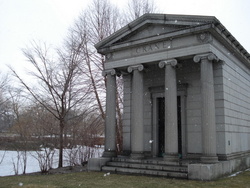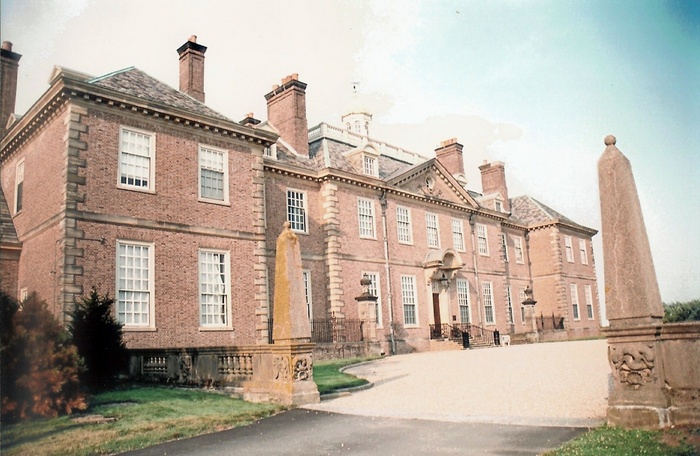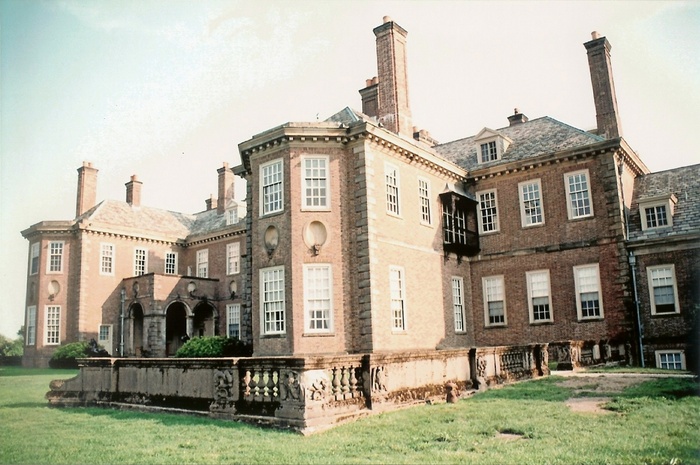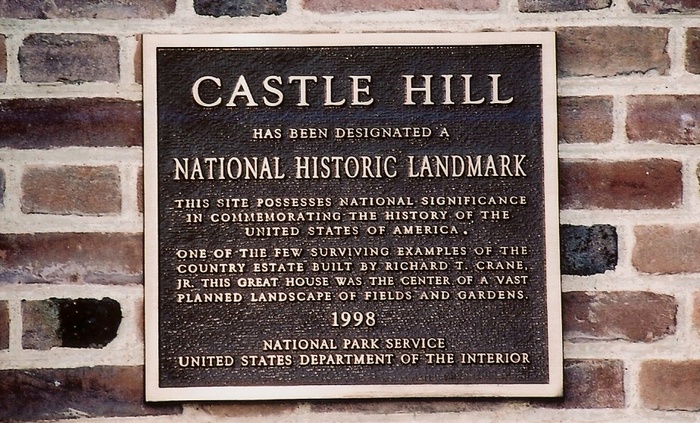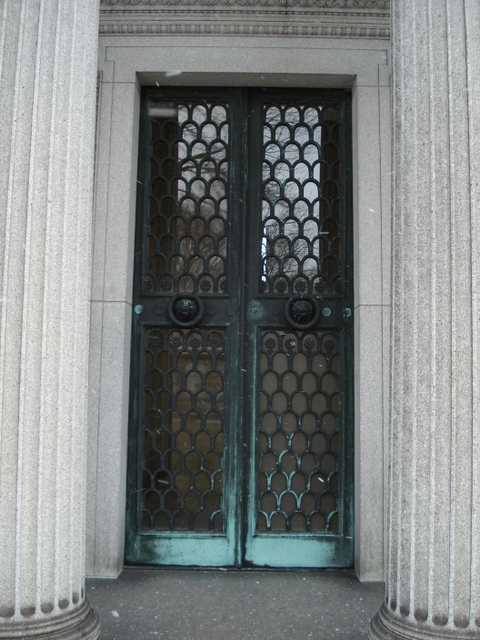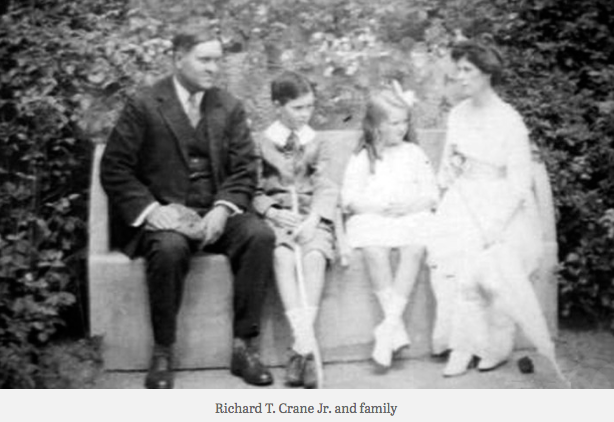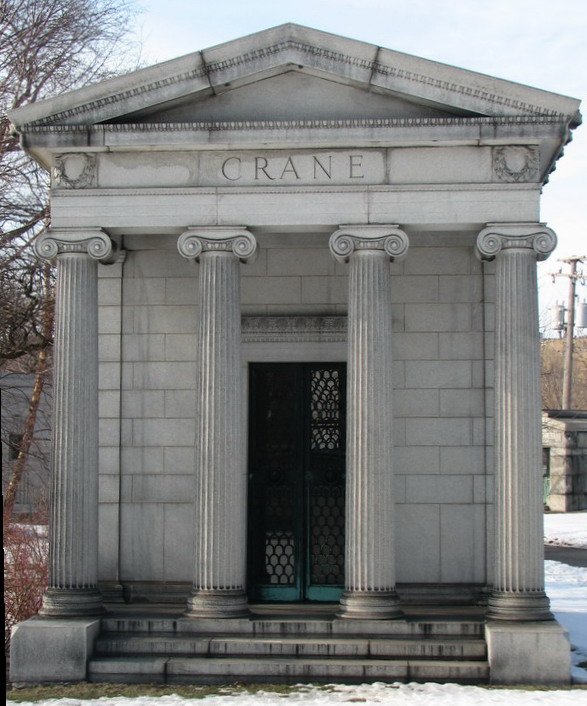----------
Father, Richard Teller Crane; founder and president of Crane Co., manufacturers, Chicago; organized and supported first public graded manual training school in Chicago; son of Timothy Botchford and Maria (Ryerson) Crane, of Paterson, N.J. Mother, Mary Josephine (Prentice) Crane; daughter of Alonzo Tyng and Emeline (Rockwell) Prentice, of Lockport, N.Y. Nephew: Herbert P. Crane, Jr., ex-'06 S.
The Hill School. Mechanical engineering course; Class statistician; chairman of Dance Committee; a governor of University Club; member Cloister and Book and Snake.
Traveled 1895-96; connected with Crane Co. since August, 1896; in the brass and iron foundries for a few months; in charge of city sales department about two years; second vice-president 1898-1912; first vice-president 1912-14; and president since August, 1914; president of Crane, Ltd., of Montreal since June, 1918, and of Crane Export Corporation of New York since October, 1919; consul general of Persia in Chicago 1901-1912; LL D. Hobart 1931; contributed to City of Chicago major part of cost of Iroquois Memorial Emergency Hospital; in 1916, during infantile paralysis epidemic in New York City, offered $25,000 to aid in discovery of a cure or prevention of the disease; presented a valuable collection of Washingtoniana to United States Naval Academy 1918; in 1921 presented the Benjamin Stickney Cable Memorial Hospital to the town of Ipswich, Mass, where he had a summer home; as a memorial to his parents, gave a carillon of forty-three bells and tower (together with an endowment fund for maintenance) to St. Chrysostom's Episcopal Church, Chicago (of which a member), 1927; in 1928, with Mrs. Crane, gave $100,000 toward the endowment of the Department of Therapeutics of New York University and Bellevue Hospital Medical College; presented to the State of Illinois historic Buffalo Rock on the Illinois River (fifty acres) for a public park 1928; with Mrs. Crane gave a $300,000 building, the Florence Crane Hospital, to the Hartford (Conn.) Hospital group 1929; trustee and life member and director of Field Museum of Natural History, Chicago, since 1921; vice-president of Civic Opera Association of Chicago 1921-23; governing life member Art Institute of Chicago since 1917 and Chicago Historical Society since 1929; life member Ipswich Historical Society and New York Yacht Club; member Yale Committee for Participation in the Restoration of the Library of the University of Louvain (1924), Yale Engineering Association, American Society of Mechanical Engineers, International Chamber of Commerce, English Speaking Union, and The Pilgrims.
Married June 4, 1904, in Chicago, Florence, daughter of Harlow Niles and Rachel D. (Davison) Higinbotham. Children. Cornelius and Florence.
Death due to heart disease. Buried in Graceland Cemetery, Chicago. Survived by wife, son, daughter, two brothers, Charles R. Crane, of New York City, and Herbert P. Crane, of St. Charles, Ill., and four sisters, Frances Crane Lillie, the wife of Frank R. Lillie (B A. University of Toronto 1891; Ph.D. Chicago 1894; Sc.D. 1932), of Chicago, Mrs. Edmund A. Russell, of Lake Forest, Ill., Mrs. Kate C. Gartz, of Pasadena, Calif., and Mrs. Emily C. Chadbourne, of Washington, D.C.
----------
Father, Richard Teller Crane; founder and president of Crane Co., manufacturers, Chicago; organized and supported first public graded manual training school in Chicago; son of Timothy Botchford and Maria (Ryerson) Crane, of Paterson, N.J. Mother, Mary Josephine (Prentice) Crane; daughter of Alonzo Tyng and Emeline (Rockwell) Prentice, of Lockport, N.Y. Nephew: Herbert P. Crane, Jr., ex-'06 S.
The Hill School. Mechanical engineering course; Class statistician; chairman of Dance Committee; a governor of University Club; member Cloister and Book and Snake.
Traveled 1895-96; connected with Crane Co. since August, 1896; in the brass and iron foundries for a few months; in charge of city sales department about two years; second vice-president 1898-1912; first vice-president 1912-14; and president since August, 1914; president of Crane, Ltd., of Montreal since June, 1918, and of Crane Export Corporation of New York since October, 1919; consul general of Persia in Chicago 1901-1912; LL D. Hobart 1931; contributed to City of Chicago major part of cost of Iroquois Memorial Emergency Hospital; in 1916, during infantile paralysis epidemic in New York City, offered $25,000 to aid in discovery of a cure or prevention of the disease; presented a valuable collection of Washingtoniana to United States Naval Academy 1918; in 1921 presented the Benjamin Stickney Cable Memorial Hospital to the town of Ipswich, Mass, where he had a summer home; as a memorial to his parents, gave a carillon of forty-three bells and tower (together with an endowment fund for maintenance) to St. Chrysostom's Episcopal Church, Chicago (of which a member), 1927; in 1928, with Mrs. Crane, gave $100,000 toward the endowment of the Department of Therapeutics of New York University and Bellevue Hospital Medical College; presented to the State of Illinois historic Buffalo Rock on the Illinois River (fifty acres) for a public park 1928; with Mrs. Crane gave a $300,000 building, the Florence Crane Hospital, to the Hartford (Conn.) Hospital group 1929; trustee and life member and director of Field Museum of Natural History, Chicago, since 1921; vice-president of Civic Opera Association of Chicago 1921-23; governing life member Art Institute of Chicago since 1917 and Chicago Historical Society since 1929; life member Ipswich Historical Society and New York Yacht Club; member Yale Committee for Participation in the Restoration of the Library of the University of Louvain (1924), Yale Engineering Association, American Society of Mechanical Engineers, International Chamber of Commerce, English Speaking Union, and The Pilgrims.
Married June 4, 1904, in Chicago, Florence, daughter of Harlow Niles and Rachel D. (Davison) Higinbotham. Children. Cornelius and Florence.
Death due to heart disease. Buried in Graceland Cemetery, Chicago. Survived by wife, son, daughter, two brothers, Charles R. Crane, of New York City, and Herbert P. Crane, of St. Charles, Ill., and four sisters, Frances Crane Lillie, the wife of Frank R. Lillie (B A. University of Toronto 1891; Ph.D. Chicago 1894; Sc.D. 1932), of Chicago, Mrs. Edmund A. Russell, of Lake Forest, Ill., Mrs. Kate C. Gartz, of Pasadena, Calif., and Mrs. Emily C. Chadbourne, of Washington, D.C.
